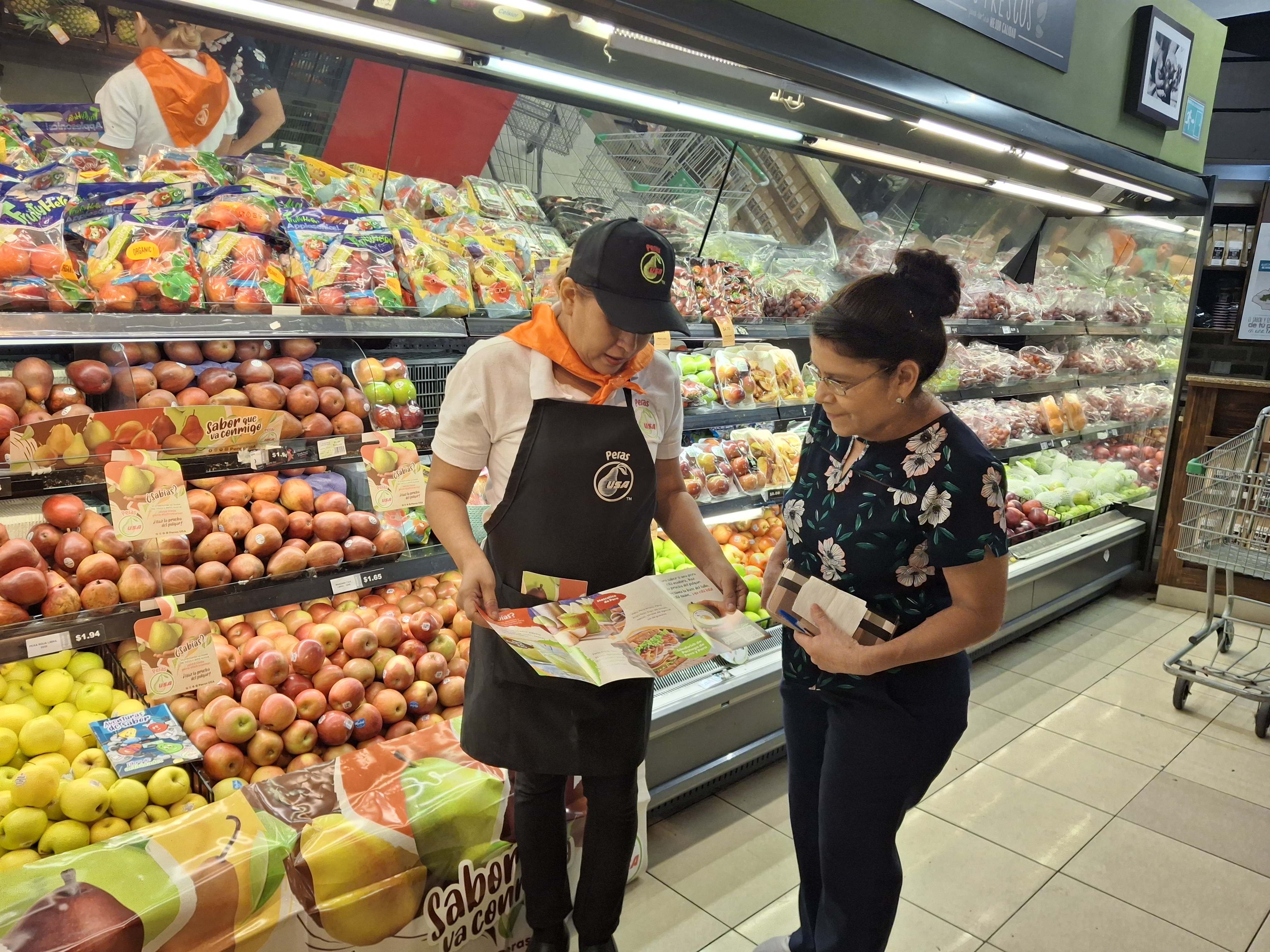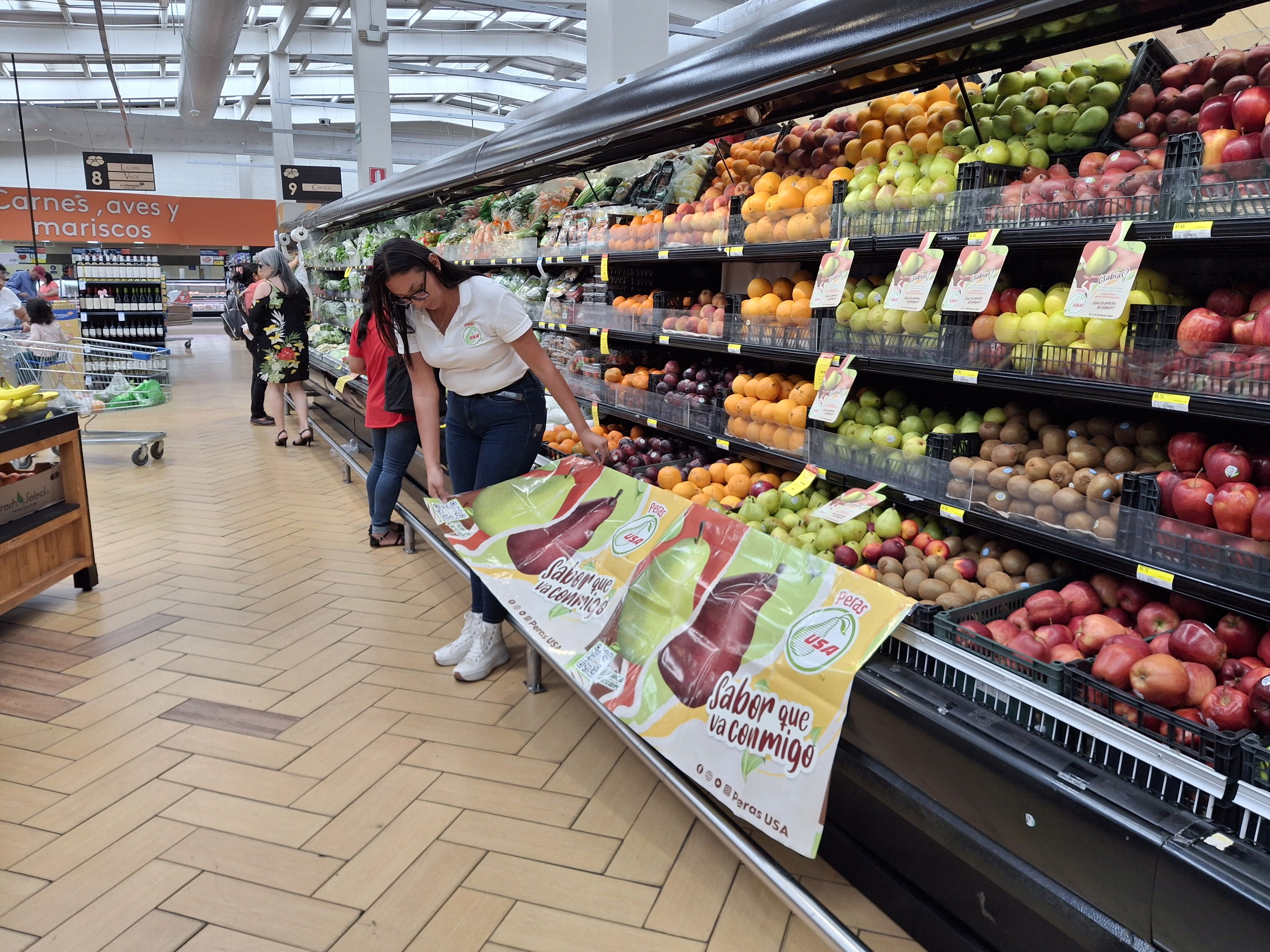
INTERNATIONAL MARKET REPORT
03/28/2025
CENTRAL AMERICAN REGION
MARKET PULSE
(SOURCE: WSTFA)
Feedback from the Trade on Their Plans and Interest in the USA Pear Season:
Importers and retailers commented that prices at origin have been higher during the entire season, which is limiting the volumes handled, especially when compared with other origins. Some will continue quoting USA Pears during March in order to supply their stores or customers in the CAM region, but other importers have started importing pears from other origins. USA Pear volumes are expected to decrease for the next month, because trade members will not receive more loads. Northwest pears reported 62% pear market share in the wholesale sector, with 70% share in supermarket stores and 74% in traditional channels. Sales and quality were reported as good during this period.
Expectations for Any Freight or Logistics Challenges:
Currently, there are no challenges or concerns related to freight or logistics issues.
Opportunities in Your Market for Specific Varieties, Sizes, and Grades:
Anjou, Bosc and Red Anjou are the main varieties requested by importers. However, they are open to other varieties if the price is competitive. Small and medium sizes for US#1 and Fancy grades are preferred.
Update on the Competition in the Market:
Chile was the second pear supplier in the region, reaching 25% pear market share in the wholesale sector, 16% in supermarket stores and 14% in traditional channels. Sales and quality were reported as good during this period and volumes are expected to increase during the next month because importers will receive more loads. Pears from Argentina reported 11% pear market share in the wholesale sector, 9% at supermarket stores and 12% in traditional channels. Sales and quality were reported as good during this period; volumes are expected to remain at the same level during the next month, because importers will receive more loads. Pears from Spain reported 2% pear market share in the wholesale sector and 3% in supermarket stores. Volumes are expected to decrease during the next month, because importers will not receive more loads.
Political or Economic Issues Impacting Imports, Retail, or Consumer Behavior:
The latest CPI data for the Central America and Dominican Republic (CARD) region show that in February 2025, year-on-year inflation stood at 2.47%, an increase of 0.02 percentage points compared to the previous month. Honduras (4.75%) recorded the highest year-on-year inflation rate, followed by the Dominican Republic (3.56%), Nicaragua (3.45%), Guatemala (1.79%), Costa Rica (1.25%) and El Salvador (0.06%), according to the Executive Secretariat of the Central American Monetary Council (SECMCA).
Other Brief Comments:
None at this time.
USA PEARS: RETAIL PRICING, SIZES, AND GRADES
-
US1: 90%
-
Fancy: 10%
-
3rd Grade: %
COMPETITION: RETAIL PRICING AND SIZES
UPCOMING ACTIVITIES


